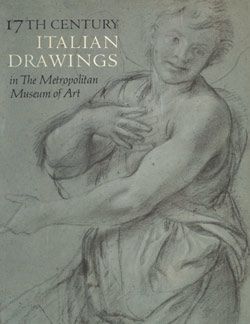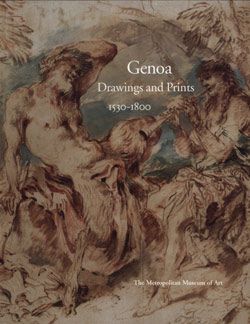Ceiling Design with the Presentation in the Temple
Gregorio de' Ferrari Italian
Not on view
Gregorio de Ferrari's virtuosity as a designer of illusionistic fresco paintings can be appreciated with particular immediacy in his numerous extant compositional drawings. Their mastery of perspective and architecture were particularly admired by his contemporaries (see Soprani-Ratti 1768-69, vol. 2, p. 115).
As in the present drawing, the artist often projected his figural narratives in steep 'sotto in su' (seen from below) perspective, framing them with delightful fictive architectural detailing. Mary L. Myers attributed the Metropolitan Museum's sheet to Gregorio (New York 1975, no. 22), an attribution reinforced by a related drawing in the print room of the Palazzo Rosso, Genoa (inv. no. 2130), which is drawn in the same medium and depicts another Marian subject, the Immaculate Conception (Newcome 1973-74, pp. 82-83; Gruitrooy 1987, pp. 431-32, 458-59). Both figural designs are set within irregular fields, punctuated at the corners with richly embellished pendentives spanning a grated, arched window, and share a theatrical exuberance of light and linear rhythm.
Before coming to Genoa, the city which became his home and which he greatly enriched with his art, Gregorio de Ferrari immersed himself in the works of Correggio in Parma, where he lived for several years. It is often noted that his study of Correggio was decisive for his development of an exuberant lyricism, bravura effects of light and color, and sweeping, rhythmic compositions. These qualities identify the author of this formerly anonymous drawing as Gregorio.
(Carmen C. Bambach)
Due to rights restrictions, this image cannot be enlarged, viewed at full screen, or downloaded.





